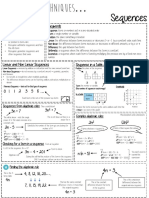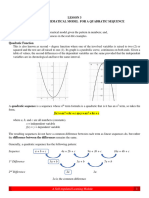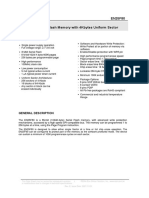0% found this document useful (0 votes)
23 views4 pagesUnit 9 - Sequences and Functions
Unit 9 covers sequences and functions, detailing types of sequences (linear, geometric, non-linear) and how to generate and identify them. It explains finding rules for sequences using nth term formulas and represents functions through notation, input-output tables, and graphs. The document also includes common mistakes, real-world applications, and practice questions for reinforcement.
Uploaded by
ee.trung.nguyenCopyright
© © All Rights Reserved
We take content rights seriously. If you suspect this is your content, claim it here.
Available Formats
Download as PDF, TXT or read online on Scribd
0% found this document useful (0 votes)
23 views4 pagesUnit 9 - Sequences and Functions
Unit 9 covers sequences and functions, detailing types of sequences (linear, geometric, non-linear) and how to generate and identify them. It explains finding rules for sequences using nth term formulas and represents functions through notation, input-output tables, and graphs. The document also includes common mistakes, real-world applications, and practice questions for reinforcement.
Uploaded by
ee.trung.nguyenCopyright
© © All Rights Reserved
We take content rights seriously. If you suspect this is your content, claim it here.
Available Formats
Download as PDF, TXT or read online on Scribd
/ 4



























































































